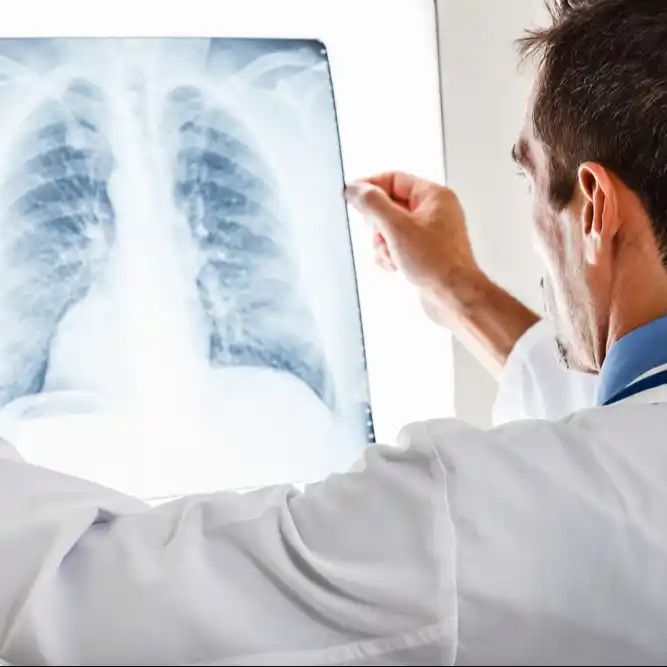Understanding Lung Nodules: When to Worry
Lung nodules are small masses of tissue in the lungs that can be detected through imaging tests such as X-rays or CT scans. While many lung nodules are benign and do not pose a significant health risk, some can indicate the presence of lung cancer or other serious conditions. Understanding what lung nodules are, their causes, and when they should be a cause for concern is crucial for effective management and treatment.
Table of Contents
- Introduction to Lung Nodules
- Types of Lung Nodules
- Causes of Lung Nodules
- Symptoms Associated with Lung Nodules
- Diagnosis of Lung Nodules
- When to Worry About Lung Nodules
- Monitoring and Follow-Up
- Treatment Options
- Conclusion
- FAQ Section
- References
1. Introduction to Lung Nodules
Lung nodules, also known as pulmonary nodules, are small, roundish growths in the lung tissue. They are typically less than three centimeters in diameter and can be detected incidentally during imaging studies performed for other reasons. While the discovery of a lung nodule can be alarming, it is important to note that most nodules are benign.
2. Types of Lung Nodules
Lung nodules can be classified into two main categories:
- Benign Nodules: These are non-cancerous growths that may be caused by infections, inflammation, or other non-cancerous conditions. Common types include hamartomas and granulomas.
- Malignant Nodules: These nodules are cancerous and can be a sign of lung cancer or metastasis from other cancers. Early detection and diagnosis are crucial for effective treatment.
3. Causes of Lung Nodules
There are several potential causes of lung nodules, including:
| Cause | Description |
|---|---|
| Infections | Conditions such as tuberculosis, fungal infections, or pneumonia can lead to the formation of nodules. |
| Inflammation | Conditions like sarcoidosis or rheumatoid arthritis can cause nodules due to inflammation in the lungs. |
| Benign Tumors | Non-cancerous growths such as hamartomas can develop in lung tissue. |
| Malignant Tumors | Lung cancer or metastasis from other cancers can result in the formation of nodules. |
| Previous Injuries | Scarring from previous lung injuries or surgeries can also lead to nodules. |
4. Symptoms Associated with Lung Nodules
Many lung nodules do not cause symptoms and are often discovered incidentally during imaging tests. However, some patients may experience symptoms related to the underlying cause of the nodule, including:
- Persistent cough
- Shortness of breath
- Chest pain
- Coughing up blood
- Unexplained weight loss
5. Diagnosis of Lung Nodules
When a lung nodule is detected, further evaluation is often necessary to determine its nature. The diagnostic process may include:
- Imaging Tests: Follow-up CT scans can provide detailed images of the nodule and surrounding lung tissue.
- Biopsy: A biopsy may be performed to obtain a tissue sample from the nodule for laboratory analysis. This can help determine if the nodule is benign or malignant.
- PET Scan: A positron emission tomography (PET) scan can help assess the metabolic activity of the nodule, aiding in the diagnosis.
6. When to Worry About Lung Nodules
While the majority of lung nodules are benign, certain factors may indicate a higher risk of malignancy. You should consider seeking further evaluation if:
- The nodule is larger than 1 cm in diameter.
- There are irregular or spiculated (spiky) edges around the nodule.
- The nodule shows increased metabolic activity on a PET scan.
- There is a history of smoking or exposure to carcinogens.
- Symptoms such as persistent cough or unexplained weight loss are present.
7. Monitoring and Follow-Up
For benign nodules, a “watchful waiting” approach may be recommended, which involves regular follow-up imaging to monitor the nodule for any changes in size or appearance. The frequency of follow-up scans may vary based on the initial characteristics of the nodule.
8. Treatment Options
The treatment for lung nodules depends on their nature:
- Benign Nodules: These may require no treatment other than regular monitoring.
- Malignant Nodules: If a nodule is determined to be cancerous, treatment options may include surgery, chemotherapy, radiation therapy, or targeted therapy, depending on the type and stage of cancer.
9. Conclusion
Lung nodules are common findings that can cause concern for patients and healthcare providers alike. While most nodules are benign, understanding the factors that may indicate a higher risk for malignancy is crucial for timely diagnosis and treatment. Regular monitoring and follow-up care play an essential role in managing lung nodules effectively.
10. FAQ Section
What are lung nodules?
Lung nodules are small masses of tissue in the lungs, often detected through imaging tests. They can be benign or malignant.
How are lung nodules diagnosed?
Diagnosis typically involves imaging tests such as CT scans, biopsies, and sometimes PET scans to assess the nature of the nodule.
When should I worry about a lung nodule?
Concerns arise if the nodule is larger than 1 cm, has irregular edges, shows increased metabolic activity, or if there are accompanying symptoms like persistent cough or weight loss.
What causes lung nodules?
Causes can include infections, inflammation, benign tumors, malignant tumors, or scarring from previous lung injuries.
Do lung nodules always require treatment?
Not all lung nodules require treatment; benign nodules may only need monitoring, while malignant nodules may require more aggressive treatment.
How often should lung nodules be monitored?
Monitoring frequency depends on the nodule’s characteristics and the healthcare provider’s recommendations, typically involving follow-up imaging every 3 to 6 months.For more information on lung nodules, you can refer to the Wikipedia page.






More Stories
Where to Watch USMNT vs Jamaica National Football Team
How I Met My Monster
How Should a Ring Fit